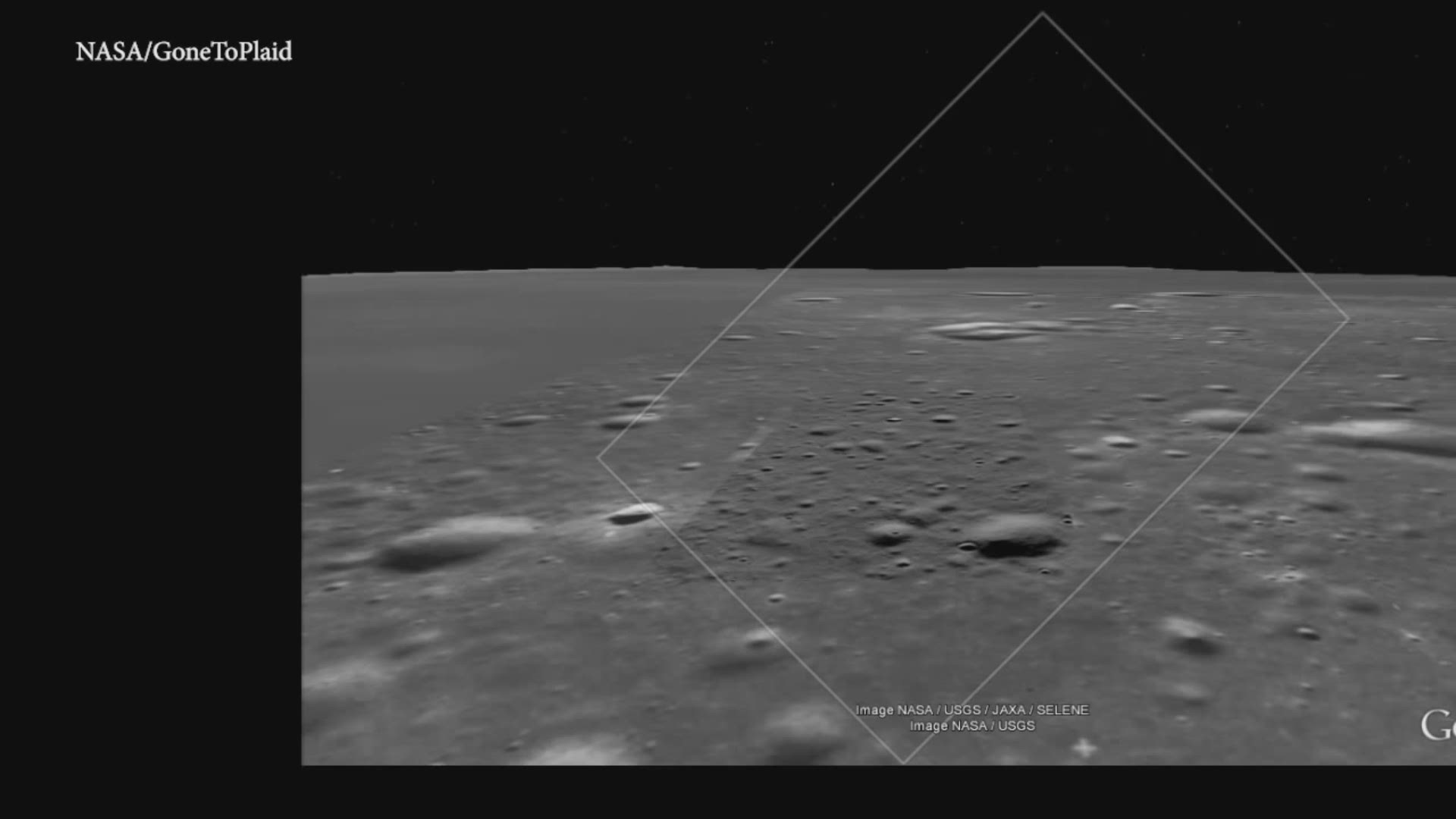KNOXVILLE, Tennessee — Editor's Note: 10News will air a special celebrating East Tennessee's connection to the Apollo mission on July 16 at 5:30 p.m.
Send a man to the moon?
As I watched Apollo 11 take off from the beach about 23 miles south of Cape Canaveral, Fla., I was more impressed that we'd sent a chimp into orbit.
But that's the way 7-year-old boys think. An ape in space? That must have been something.
When Neil Armstrong, Buzz Aldrin and Michael Collins lifted off the morning of July 16, 1969, on their mission to the moon, my mom and I were living in a little community called Melbourne Beach. Fla.
There wasn't much to it. An IGA, a couple 7-Elevens where I could get an Icee, a couple churches, a mysterious, domed government tracking station and an elementary school called Gemini, named for the space program that preceded Apollo in the 1960s.
My mom and I rented a place in the Sea Breeze motel-apartments on Highway A1A across the street from the Atlantic Ocean. To live near the ocean was bliss.

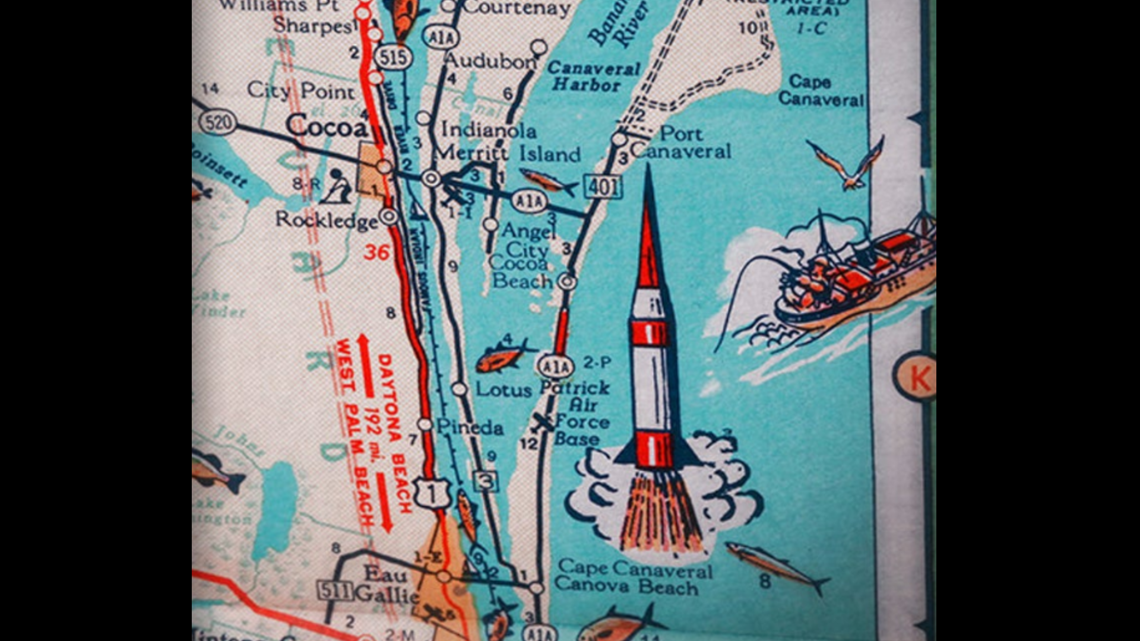
Every time something took off from Cape Canaveral, you could see it from our beach.
Everyone knew about Apollo. NASA and its contractors were major employers in Brevard County in the 1960s and early 1970s. Some of my friends' parents worked on it in some capacity. The region today is still known as the "Space Coast."
I knew about space. Pop culture in the 1960s was obsessed with space.
On TV we had "My Favorite Martian," "I Dream of Jeanne," "Lost in Space," "Star Trek," "The Jetsons" and "Space Ghost." In 1968, when I was 6, my mom took me to a drive-in showing of "2001: A Space Odyssey," which scared me in ways I didn't fully understand.
A GIANT FLARE RISING IN THE SKY
Even at age 7, I had a little understanding of the space program. I found it deeply fascinating that NASA had sent a chimpanzee up in a rocket. NASA scientists wanted to see how a launch would affect a primate's ability to do tasks.
They actually launched several monkeys and chimps in the late 1950s and early 1960s, before I was born, including the passenger they dubbed Ham. I used to wonder how Ham reacted as he went up. I wondered how he felt when he splashed back down.

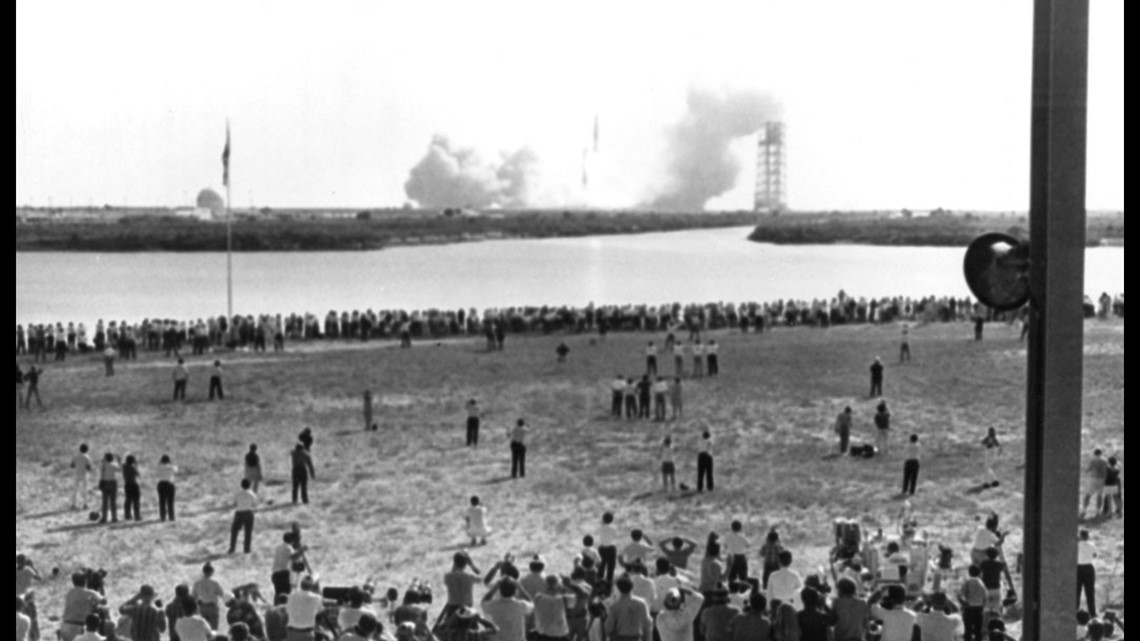
Sitting on the pad up the coast, the Apollo 11 rocket itself was too far away to see with the naked eye. But I knew I'd be able to see the launch.
I remember the morning being sunny and warm. The beach wasn't real crowded but there were people waiting around for liftoff. Closer to the Kennedy Space Center the roads were packed.
The first indication it had gone off was a low red glow from the Cape. The giant flare carrying the astronauts started slowly but climbed faster and faster. People shouted as it rose in the sky.
Rockets make an arc, or appear to anyway, as they head deeper into the sky.
You can't take your eyes off one when it's going up. You have to shield your eyes because of the light, but you just keep watching this fiery, hard ember going faster and faster.
People closer to the Cape could hear it going up as well. It made a crackling sound as the five F1 engines burned through fuel. I knew that from what I'd seen on TV, but I don't remember hearing anything from my vantage point on the beach.
It seemed like you could see the tail of Apollo 11 for a minute or two. And then it got so high you couldn't see it anymore.
With the rocket out of sight, you just had to assume the men would be alright.


GHOSTLY IMAGES
Liftoff impressed me. But it's Armstrong and Aldrin's walk on the moon that remains the most vivid memory 50 years later.
The lunar lander touched down Sunday, July 20, 1969.
I have no recollection of watching that moment on TV, as famous as it is. It was a little after 4 p.m. I may have been out playing.
Many people today assume that Armstrong stepped right out after announcing, "The Eagle has landed." That's not true at all.
They didn't start to climb down from the lunar module until after 10:30 pm. Imagine having to wait all those hours, standing up in that tiny, tiny space.
My mom didn't care to watch the moonwalk. She went to bed. But I wasn't going to miss it.
We had a small black and white television, as did many people back in those days. The screen wasn't much bigger than what you get on a laptop today. We had no cable. With rabbit-ear antennae, your viewing options consisted of four or five channels -- CBS, NBC, ABC, a primitive public television station and maybe an independent station that showed lots of reruns.
I sat in the dark in the front room of our ground-level apartment by myself, lit only by the TV's glow. CBS's Walter Cronkite, the preeminent voice of space coverage, described what was about to happen.
All of a sudden, we had a shadowy, flickering image as Armstrong flipped on a camera posted on the LEM as he climbed down the ladder.

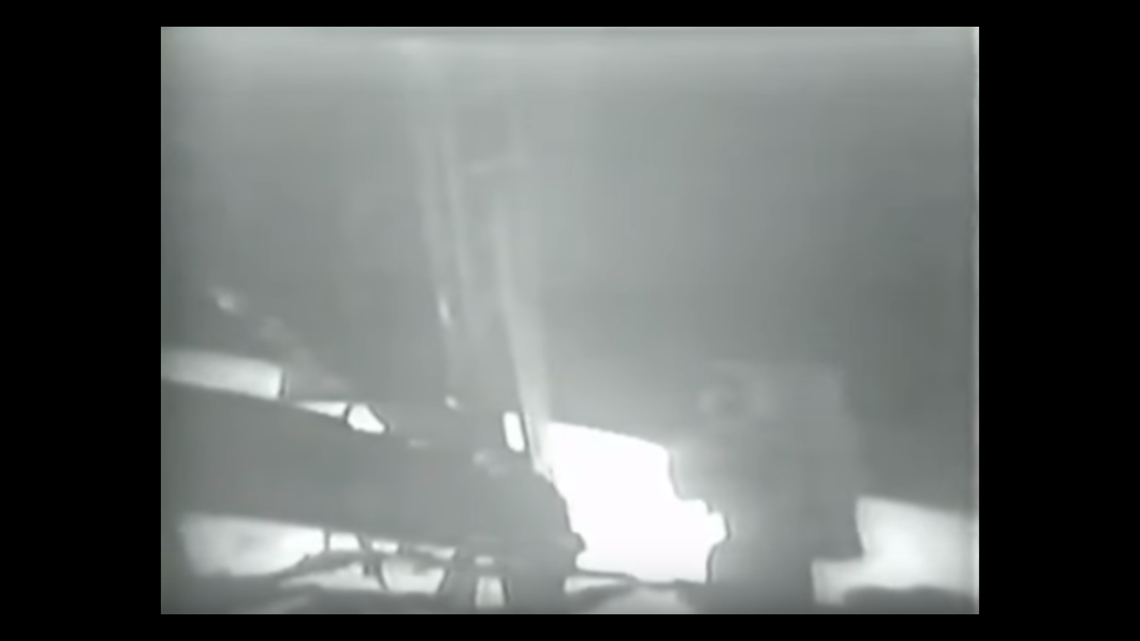
First, I could make out what appeared to be the lander and a vague profile of the ladder. Then, you caught a glimpse of Armstrong slowing making his way down.
Today's audience would be unhappy with the quality of the picture. In 1969 you marveled that you had any image at all.
As he set foot on the moon's surface, Armstrong said, "That's one small step for a man, one giant leap for mankind." The transmission was slightly garbled, however, so what we all heard was, "That's one small step for man, one giant leap for mankind."
Only a slight difference between what he said and what we heard. But it made a difference to Armstrong. He'd given a lot of thought to what he was going to say.
In a flash, the historic moment passed. Armstrong started taking photos, grabbed a soil sample and described what he was seeing and feeling.
Aldrin stepped down next, and they went on about their business, facing a long list of mapped-out chores during their brief couple hours walking on the moon.
I can't say how much longer I watched that night. I know the broadcast went on into the early morning hours.

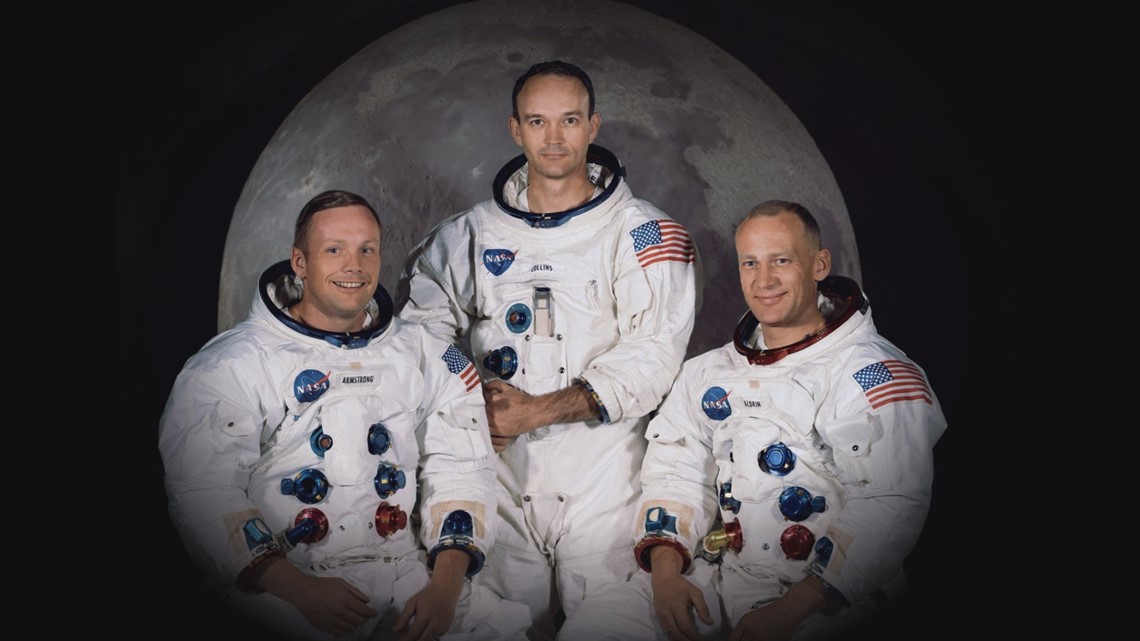
I do know I sat there in the dark alone, marveling at what had just happened and feeling like I was the only person alive other than those men.
Editor's Note: Two other Knoxvillians recalled for 10News their experience watching Apollo 11 go up in Florida.
STRANGERS UNITED BY HISTORY
It was, retired journalist Don K. Ferguson of Knoxville wrote, the "biggest three-minute show on Earth."
Ferguson, then the News Sentinel's city editor, had planned a vacation with his wife Barbara and young daughters Donna and Julia around the July 16 Apollo 11 launch.
They stayed in a hotel about an hour to the north in Daytona Beach, Fla., but climbed in the car about 3:30 a.m. that day for the trip to see the moonshot. Once they got to Titusville, about 18 miles from Cape Canaveral, they discovered that thousands and thousands of other people had the very same idea.

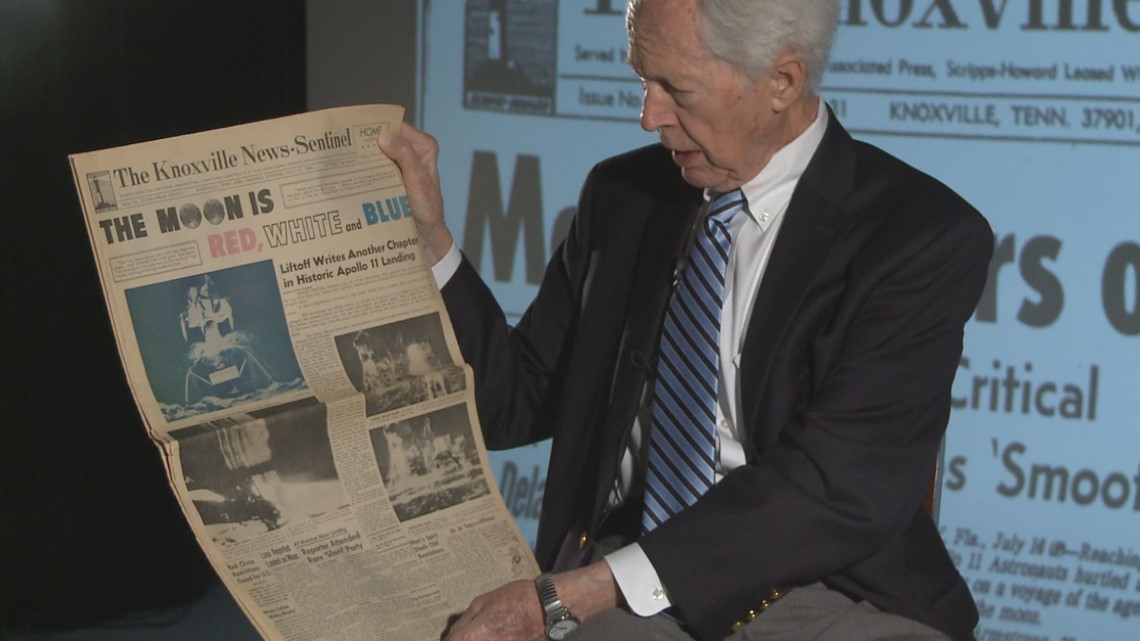
Hordes of people sat in the dark along roadways, in parks, at motels, outside restaurants. The crowd, Ferguson wrote in a story he filed the next day for the News Sentinel, included "infants, hippies, grandparents and all types of vacationers."
"They were at every available spot that a car could park," Ferguson told 10News. "There were people on the hoods of cars, on the trunks of cars, on the ground, everywhere."
The Fergusons claimed a parking spot at the Holiday Inn on U.S. 1 by the Indian River and began the hourslong wait. The Inn, then operated by a manager freshly transplanted from Knoxville, served a middle-of-the-night buffet that the Fergusons happily enjoyed.
The Tennessee family wanted a good vantage point to watch the launch so they grabbed chairs from the hotel swimming pool and carried them up to a second-floor balcony.
From that perch, you could see across the lagoon to the faraway launch pad. More than 50 boats bobbed in the water. A dozen planes circled overhead.
"You didn't dare leave your place," Ferguson said.

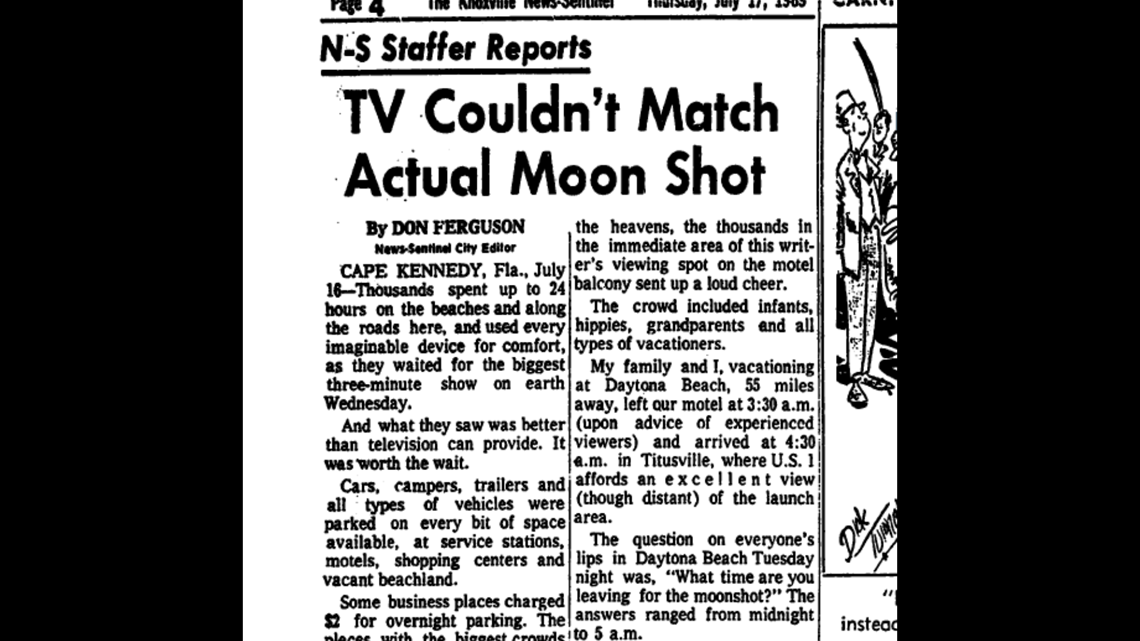
At one point his wife and daughters had to use the restroom. They were gone a long time. A worried Ferguson later learned there'd been 75 people in line to use the bathroom.
The launch itself at 9:32 a.m. was a "thrilling moment."
"From our point of view, you would see flames shoot out hundreds of yards in both directions, and you saw the rocket," Ferguson recalled. "You saw it all. You never saw that on TV because the camera would follow the rocket."
The Holiday Inn crowd erupted in applause and cheers. Seconds later, the balcony shook.
"Our girls remember that because the sound came across the water delayed and then it did shake the balcony," he said. "I guess it's a wonder -- you hear about balconies falling. Well, there were so many people on that balcony, it's a wonder it didn't fall."
The trip down had taken an hour. The trip back to Daytona was much longer - 45 minutes to get out of the parking lot and then about three hours in bumper-to-bumper traffic.
The Fergusons carried on with their Florida vacation until it was time to return home to Knoxville on Sunday, July 20, 1969. Just in time to watch Armstrong and Aldrin walk on the moon, having finally reached their destination.
Ferguson said he's grateful the family witnessed the launched together; it's a moment they still talk about.
He's also struck by how everyone came together at the moment the Saturn V went up.
"Suddenly we were one group, enjoying this historic moment," he said. "All together but yet we weren't. We didn't know anybody around and they didn't know us."


A VIP VIEW
Retired lawyer Wilson Horde clicks through a carousel of photo slides and suddenly you're back 50 years looking at the faces of famous people in the VIP stands on launch day at Kennedy Space Center.
It was by chance that Horde, now in his early 90s, got to mingle among the rich and famous in the closest viewing spot to Apollo 11.
As counsel for Union Carbide, then a government contractor in Oak Ridge, he struck up a conversation with a visitor who gave a briefing about the future of U.S. space plans.
Would Horde like to come see the launch, the man wondered. Yes, the lawyer replied, he certainly would.


Horde spent several days at the Kennedy Space Center before the launch, touring facilities such as the giant Vehicle Assembly Building, where the various components of the huge rocket had been put together before being slowly rolled out on a giant crawler to the launch pad.
VIP guests rode around the site on buses. For launch day, they had to be on the bus by 5:30 a.m.
"Nobody recognized me," Horde recalled with a chuckle.
But he recognized plenty of celebrities as well as members of Congress.
Horde took a photo of TV talk show host Johnny Carson as he stood in the stands, wearing a colorful scarf. Sidekick Ed McMahon stood nearby. Another photo shows dashing TV actor Hugh O'Brian, who stared in a 1950 movie about a mission to the moon.
Many members of Congress took VIP seats in risers flanked by a long row of international flags.
Former President Lyndon B. Johnson, wearing sunglasses and wiping his face was a handkerchief, was there along with former first lady Ladybird Johnson. Horde snapped his photo.
Newly elected President Richard M. Nixon remained at the White House, but Vice President Spiro Agnew attended. Horde got his picture.
"I was clicking as fast as (the camera) would take them," he said. "I think some people thought I was an official photographer. But I wasn't, of course."

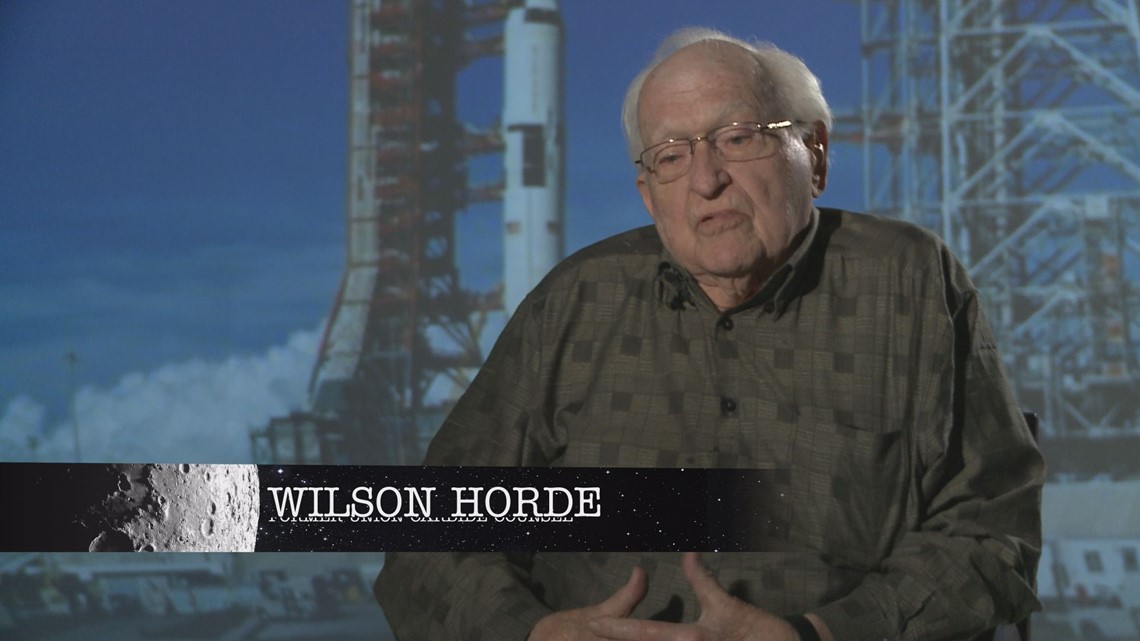
On the public address system Horde could hear announcer Jack King as he gave his famous countdown to launch time.
"Five, four, three, two, one, zero...liftoff! We have a liftoff!" King said.
When the Saturn V's five F1 engines fired up, they gave a roar and shot out flames that burned from side to side.
It was like thunder, Horde recalled, coming almost in waves.
"Having never seen one before it was quite frightening but amazing at the same time," he said. "And it certainly kept everybody's attention."
The crowd cheered at the rocket rose above the pad, and they kept cheering as they watched it rapidly disappear into the clouds.
After the launch, Horde spotted Johnson heading for the restroom. He wanted to meet the man who as vice president had been there when President Kennedy announced in 1961 that the US would try to put a man on the moon.
Johnson's Secret Service detail told him the former president would certainly speak to him if he waited just a moment.
Then Johnson came out.
"I asked him the usual questions that tourists might ask. I asked if he was as impressed as I was. He said it was tremendous. I presented my badge to identify who I was, and I asked if he would autograph it for me.
"I thought he would sign his name. But he didn't. He just put LBJ on it."
The president then wandered back to the stands to look for his wife.
Horde said many in the stands congratulated themselves at what the U.S. had accomplished.
"It was, we this, and we that," he said. "And I was thinking none of us in that group of people were involved in the prep or launch or recovery."
The thought also crossed Horde's mind: Are the astronauts going to be able to come back?

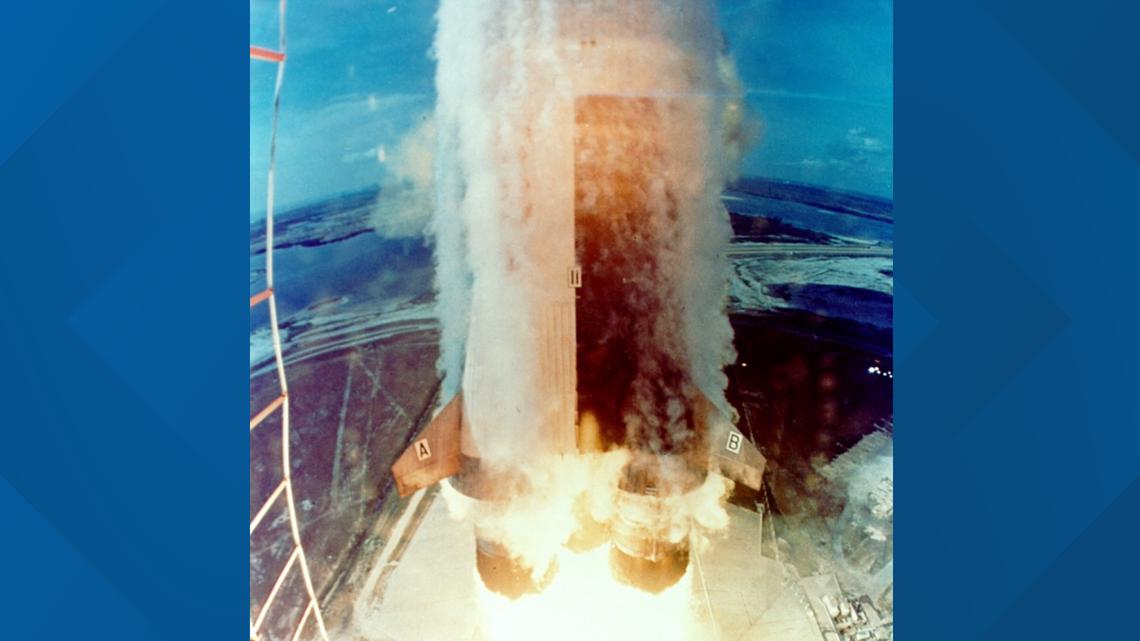
Armstrong, Aldrin and Collins made it back, of course, to great fanfare. It was a spectacular achievement that Horde remembers well to this day.
Besides his slides, Horde acquired another memento of the moon mission. Some at Union Carbide got small rock samples brought back by the astronauts.
"They gave us pieces of the rock in our office in Oak Ridge," he said. "They were small pieces. But at least I got a souvenir from the moon shot."

